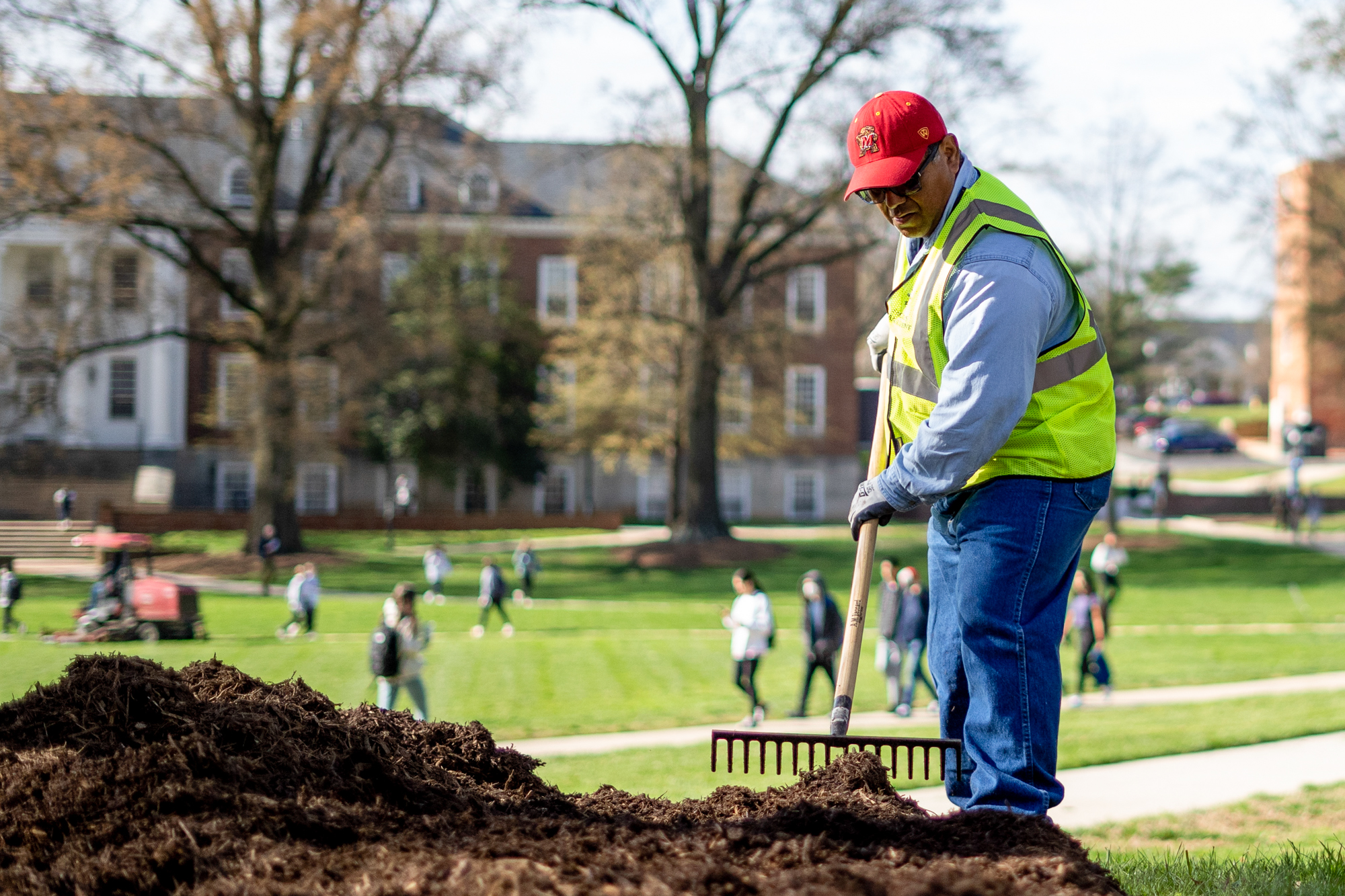A typical day for Jairo Fuentes, a grounds supervisor at the University of Maryland, starts early. His shift begins at 6 a.m., and ends at 2:30 p.m.
At the start of the day, Fuentes and his crew go to their designated trash and recycling bins and empty them. He has to cover about 125 acres of land, which is why it can take a while, Fuentes said.
“Weeds grow very fast. You’d be surprised, you can clean it up today, the next week it’s back,” Fuentes said. “Just like school, you have to be on it.”
Fuentes is one of 40 university employees working every day to maintain this university’s campus, Karen Petroff, assistant director for Arboretum and Horticultural Services, said.
As a part-time student majoring in landscape architecture, Fuentes, 29, has to balance his school work, job and family.
“I’m taking two [classes],” Fuentes said, “Outside of here, I have a family. I have a daughter. So I have to make sure she’s well. She’s still in middle school.”
He said the type of work he does depends on the season. Now that spring has sprung, Fuentes said he has a lot of mulching to do for garden beds on the campus.
Fuentes said the university allows him to adjust his schedule, so he can work and go to classes. And some of what he learns in class, he applies to his work.
[Student affairs VP says $15 minimum wage possible for UMD students]
After taking a class on pesticides, he was eligible to get a pesticide license, which directly elevates the type of work he is able to do as a grounds supervisor.
Michael Ellis, like Fuentes, is a part-time student and an employee at the university. Ellis graduated from this university in 2012 and has a degree in environmental science and policy. But now, Ellis takes graduate level courses on the side while doing his job as a landscape technician and horticulturalist assistant with the university’s Arboretum and Botanical Garden.
“I do a lot of work just keeping campus beautiful,” Ellis said. “We always want to be planting trees on campus. We always want to be having some pretty flowers blooming, some showy things to look at in all the gardens.”
Ellis was hired full time at this university in 2019 and has enjoyed returning to an academic environment. Tuition remission is one of the benefits both Ellis and Fuentes enjoy as full-time regular status employees. Certain contract workers do not receive this benefit.
As part of his continuing effort to advance his knowledge about trees and plants, Ellis is taking a plant taxonomy course called PLSC489 to learn about different plant species and how to classify them.
“It’s cool to be able to be working in the garden, and then take a little break from the garden and run to class,” Ellis said.
However, university employees are not the only ones who are crucial to maintaining the grass, gardens and trees all over the campus.
[Full-time DOTS drivers feel student raises are ‘a slap in the face’]
Agricultural and natural resources students, service clubs, fraternities and sororities, business organizations and other volunteers are also important in the upkeep of campus, Petroff said.
“Volunteering is crucial, and it actually goes back to the very origins of this institution where at the time, when it was an agricultural college, all the students had essentially work hours each day,” Petroff said.
Other employees in the grounds department include automotive technicians like Mick Mixon. His job is to fix tools and vehicles that groundskeepers and landscape technicians use every day, in addition to dump trucks and other vehicles used on the campus.
“It’s an interesting job. I do enjoy it,” Mixon, 57, said. “One day you could be working on a chainsaw, the next day you could be working on an aerator or working on the air conditioning system on a tractor.”
Many employees from different generations and different skill sets come together to keep this campus tidy and well-kept.
In particular, Ellis said he’s proud of the gardens at the Iribe Center and the Edward St. John Learning and Teaching Center, as well as the blooming cherry trees by the Memorial Chapel and the Clarice Smith Performing Arts Center.
“It really is a lot of work. And it’s not just me,” Ellis said. “We have not just University of Maryland employees working in the gardens, but we’ve got contractors working in the gardens as well. So you see a lot of effort being put into our gardens.”



